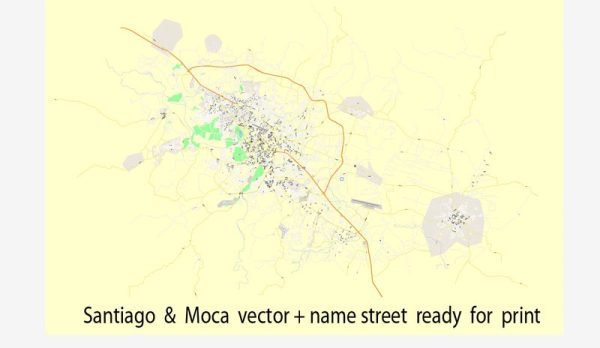Santiago is a province located in the Dominican Republic, and it encompasses a variety of natural landscapes and features. Here’s a brief description of the nature in and around Santiago:
- Mountains and Hills: Santiago is surrounded by picturesque mountains and hills, making it a region of great topographical diversity. The Cordillera Central mountain range runs through the province, providing stunning views and opportunities for hiking and exploration. The most notable peak in this range is Pico Duarte, which is the highest mountain in the Caribbean.
- Rivers and Valleys: The province is crisscrossed by numerous rivers and valleys, including the Yaque del Norte River. These waterways contribute to the lush greenery of the area and provide recreational activities such as swimming and fishing.
- Tropical Forests: Santiago boasts a variety of tropical forests, which are home to diverse flora and fauna. These forests are a vital part of the Dominican Republic’s ecosystem and provide essential habitats for various wildlife species.
- Lush Vegetation: The region features dense vegetation, with an abundance of tropical plants, palm trees, and lush greenery. The rich soil and tropical climate of Santiago make it an ideal environment for a wide array of plant species.
- Countryside Scenery: As you move away from the city center of Santiago, you’ll encounter picturesque countryside with rolling hills and farmlands. The fertile land in this region is used for agriculture, with crops such as coffee, cacao, and various fruits thriving.
- Caves and Caverns: Santiago and its surrounding areas also contain numerous caves and caverns. These natural formations are not only intriguing from a geological perspective but also make for fascinating exploration opportunities.
- Flora and Fauna: The region is home to various wildlife species, including birds, butterflies, reptiles, and small mammals. The diverse plant life and ecosystems in Santiago contribute to the overall biodiversity of the Dominican Republic.
- Waterfalls: Santiago and its vicinity are dotted with beautiful waterfalls. These natural wonders are great spots for cooling off and enjoying the natural beauty of the area. Some well-known waterfalls in the region include the Salto de Jimenoa and Salto de Baiguate.
- Agricultural Fields: The fertile lands of Santiago are used for agriculture, and the province is known for its production of various crops, including coffee, cacao, tobacco, and plantains. The agricultural fields and plantations add to the region’s charm and contribute to its economy.
- National Parks and Reserves: There are protected areas and national parks in and around Santiago, like the Armando Bermúdez National Park and the Jose Del Carmen Ramirez National Park, which preserve the natural beauty and biodiversity of the region.
Santiago in the Dominican Republic is a place of great natural beauty, offering a wide range of outdoor activities and opportunities to appreciate the diverse landscapes and ecosystems found in the area. It’s a destination where nature lovers can immerse themselves in the scenic beauty of the Caribbean.


 Author: Kirill Shrayber, Ph.D.
Author: Kirill Shrayber, Ph.D.